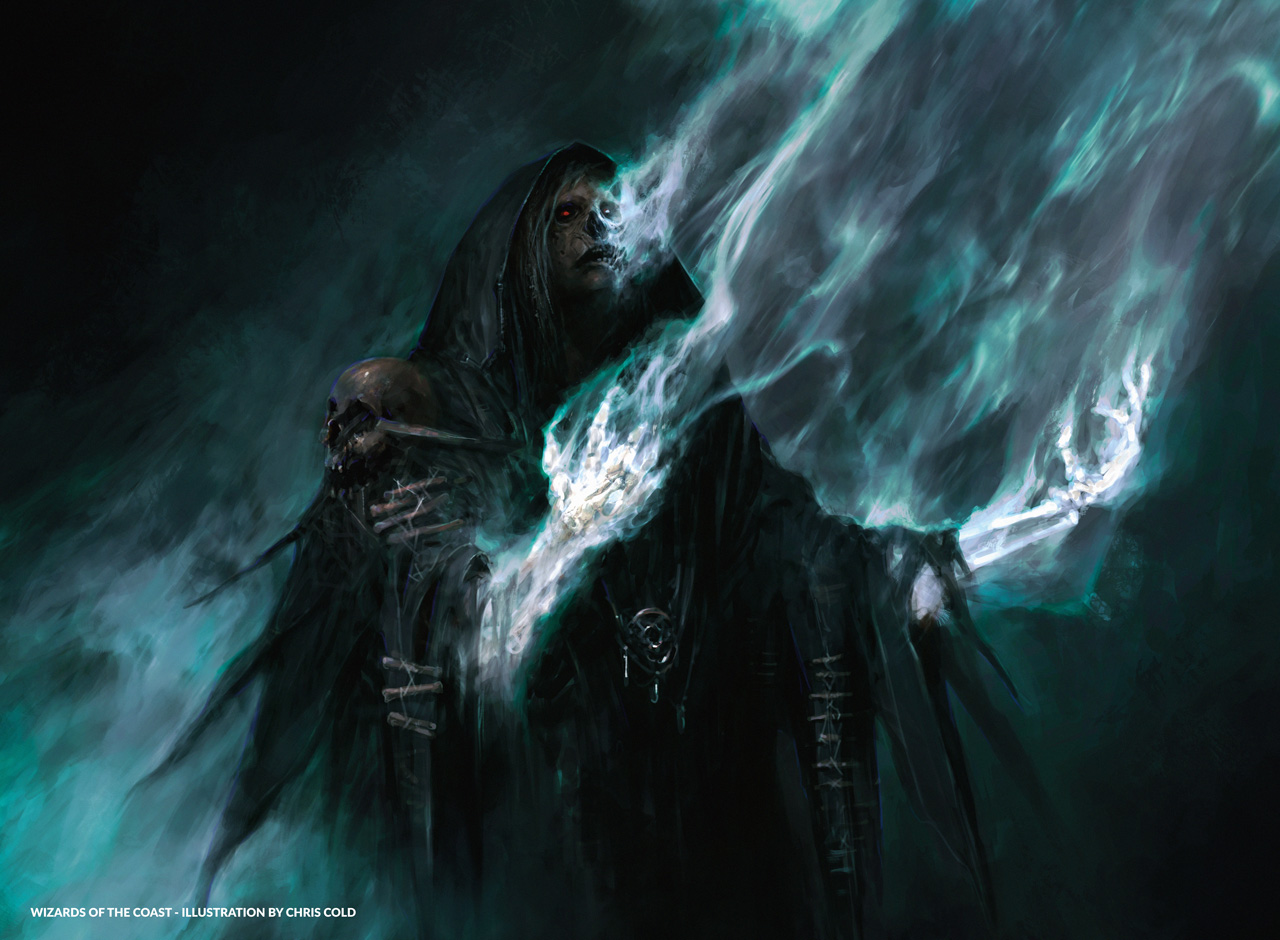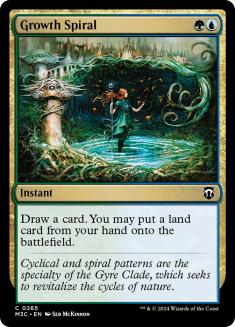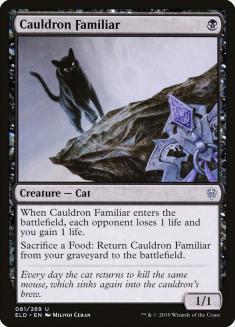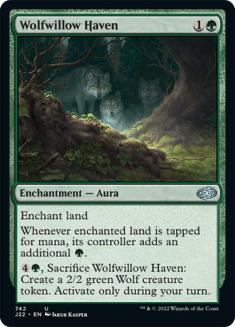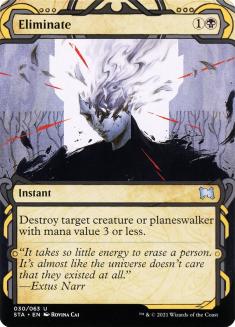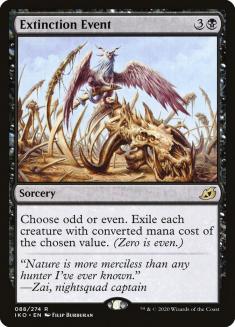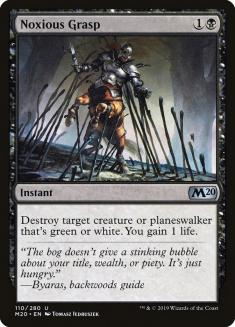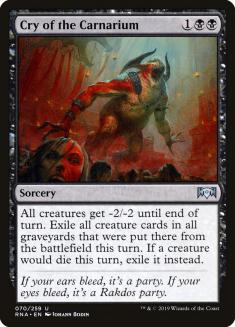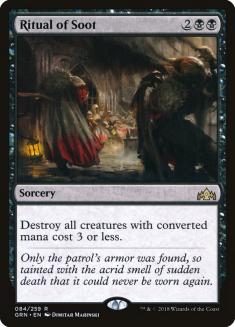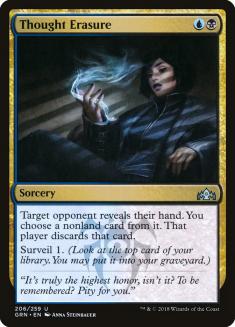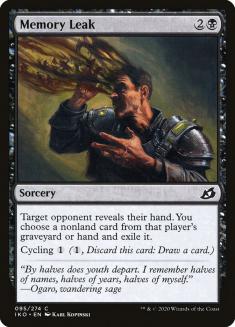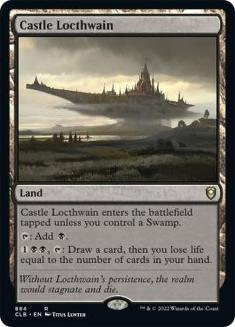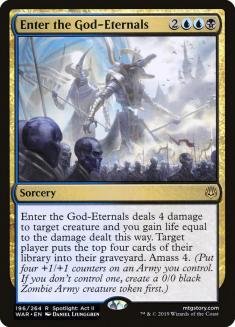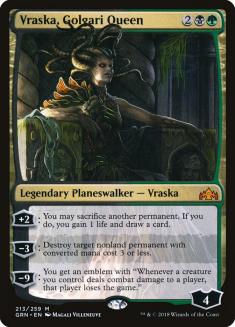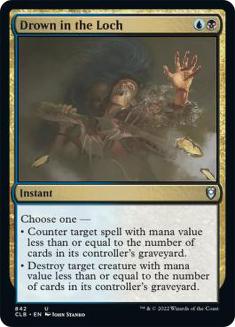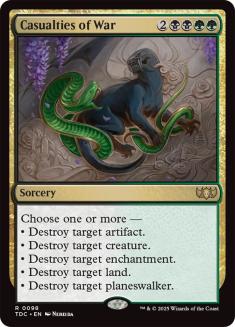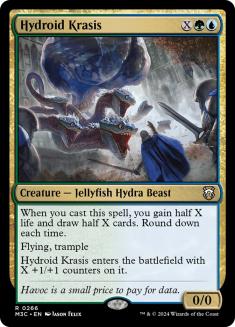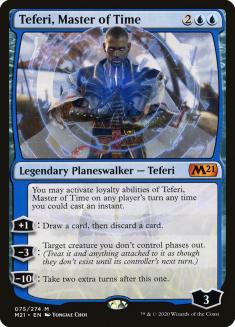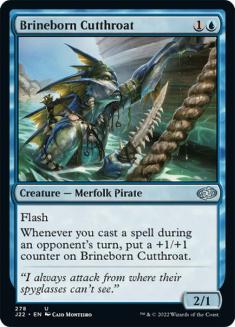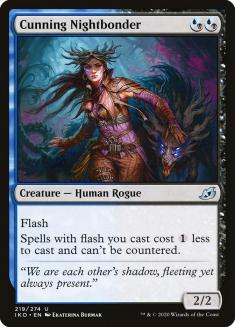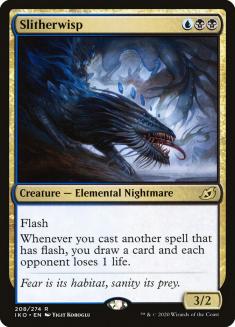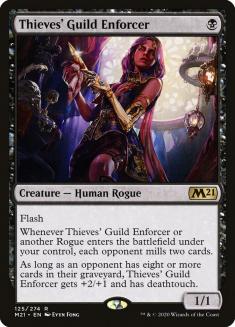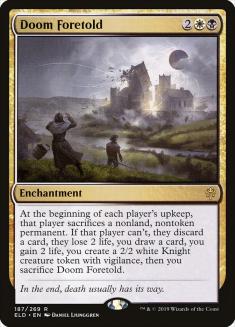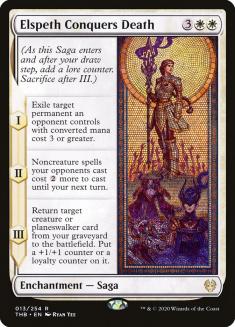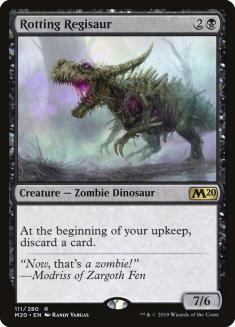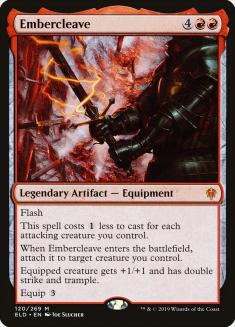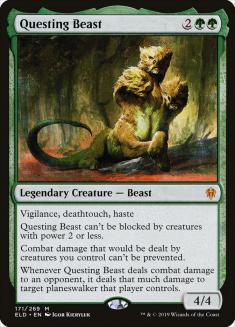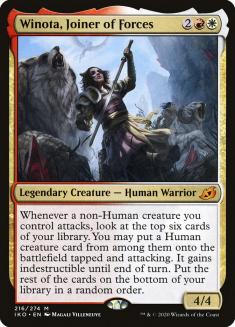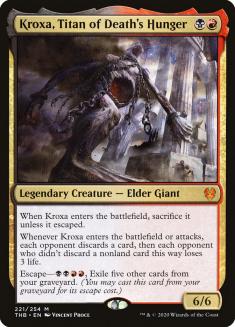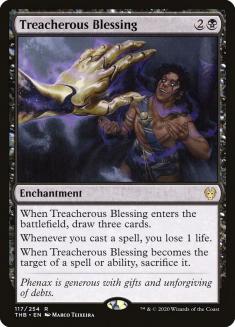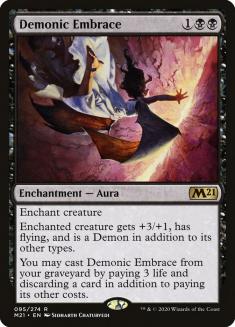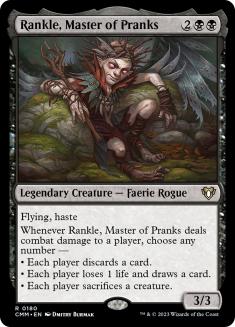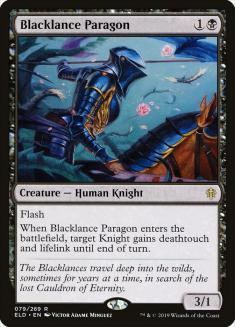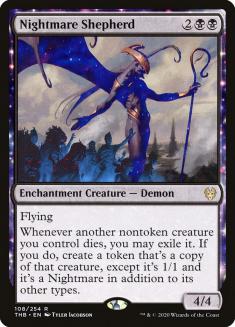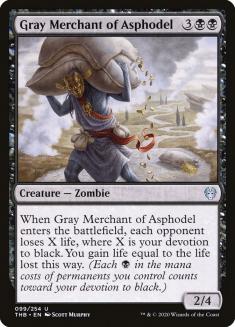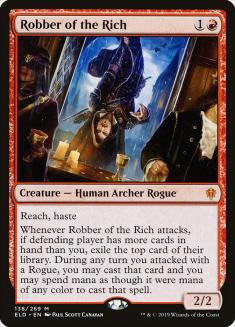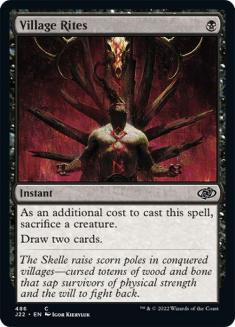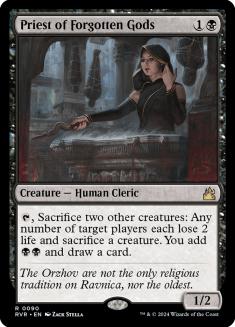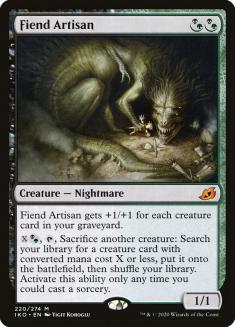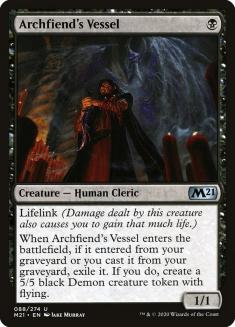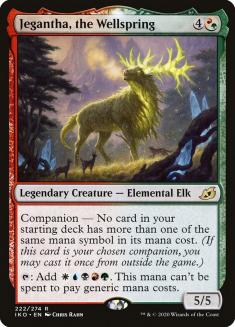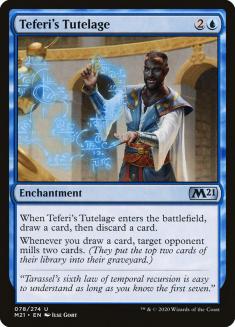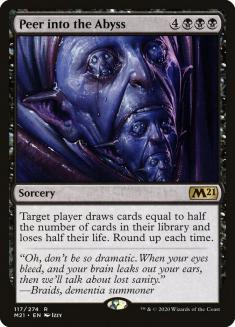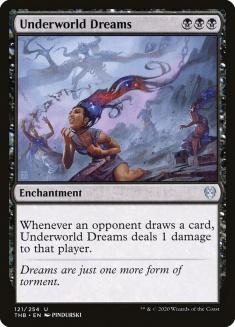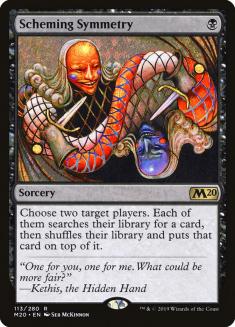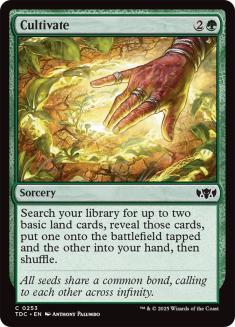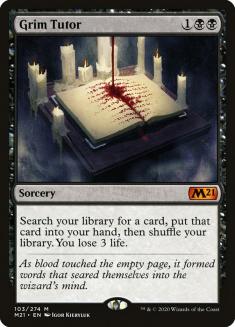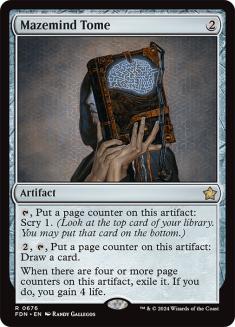It’s been close to two weeks since the most ground-shaking wave of bans in recent memory. In Standard, nearly all of the top decks had one or more cards impacted.
Teferi, Time Raveler and Wilderness Reclamation had definitely bent the format around themselves so hard, sometimes it almost seemed invisible because of how much it had just come to be accepted what the rules of engagement in the format were. Growth Spiral was arguably the best card to have in your opening hand, a topic I previously discussed at length.
Finally, we have Cauldron Familiar, a card that totally passes for fair, to be sure, but in context has just been so prevalent for so long, it has definitely worn out its welcome. What’s more, it’s among the worst offenders of translating poorly to digital, given the sheer volume of clicks.
Today, I’d like to take a look at the numerous black decks that have risen up, helping occupy the space opened up by Cauldron Familiar departing, as well as the other aforementioned bans. First off, we might as well start with what is arguably the most central pillar of the format.
The banning of Growth Spiral; Wilderness Reclamation; Oko, Thief of Crowns; Once Upon a Time; and Veil of Summer has not stopped Simic and Simic splashing a support color from being the backbone of the format. The Growth Spiral article above details why this is likely for at least the next year, but suffice it to say ramp has improved with age in these times of evolving card balance.
While some players have elected to just run with the best of what’s left, in Simic, more popular has been the use of black as a support color. Temur’s luster has diminished with the loss of Wilderness Reclamation, and Bant has much less purpose without Teferi. What actual black cards to use for support, however, would appear to be a matter of some debate.
Creatures (6)
Planeswalkers (2)
Lands (27)
Spells (25)

Phil_Ivey’s list here has an uncharacteristically high quantity of interaction.
There is no shortage of great removal spells in black, of course, and Heartless Act, Eliminate, and Extinction Event are among the most popular options. And whether maindeck or sideboard, Noxious Grasp, Cry of the Carnarium, and Ritual of Soot are all solid options in context.
In addition to spot removal and sweepers, black also brings discard to the table. While Thought Erasure is the most popular option, given its versatility and cost-effectiveness, Phil_Ivey also makes use of Memory Leak, as a metagame call against the Uro-heavy field.
Black also provides some excellent options for building card advantage and potentially leveraging the extra Uro mana into a game-winning advantage.
And finally, Phil_Ivey has an interesting twist in the form of Drown in the Loch:
Drown in the Loch is less reliable early, but going late, it is an invaluable tool, whether providing hard countermagic or extra spot removal that isn’t dead in the wrong the matchups.
While Phil_Ivey’s list has almost a Dimir Control vibe to it, with how much interaction it packs, many players are going for more of a tap-out approach, looking to drop bomb after bomb.
There are far more powerful top-end cards than you can play right now, so finding the right mix is one of the more important parts of the puzzle.
Creatures (9)
Planeswalkers (6)
Lands (28)
Spells (17)
- 3 Thought Erasure
- 2 Casualties of War
- 2 Aether Gust
- 2 Agonizing Remorse
- 3 Extinction Event
- 2 Heartless Act
- 3 Eliminate
Sideboard

Here, we see a lot of the same removal, but with added options like Agonizing Remorse and Legion’s End for further metagame tuning.
The banning of Teferi, Time Raveler and Wilderness Reclamation really opens up a lot of opportunity for alternative midrange advantage engines. While Teferi, Master of Time was already seen a decent amount of play, this could really be his time to shine.
The selection he affords us is already excellent, but in an Uro deck, he’s a great way to keep your graveyard stocked and ready to go. Some players are even going further, building on Nissa and Teferi to move into an almost Superfriends-style direction, fusing tap-out planeswalker strategies with ramp.
Creatures (7)
Planeswalkers (9)
- 1 Ugin, the Spirit Dragon
- 3 Nissa, Who Shakes the World
- 1 Tamiyo, Collector of Tales
- 2 Narset, Parter of Veils
- 2 Teferi, Master of Time
Lands (28)
Spells (16)
Sideboard

I’m a fan of Thought Distortion here. It’s lost some of its prey because of the Time Raveler departing; however, Teferi’s absence opens up new opportunities for permission, and I think we’re going to see that continue to develop as players figure out what forms of interaction they need to keep up, as well as what kinds of threats they can best take advantage of.
For instance, both Teferi, Time Raveler and Wilderness Reclamation were absolutely devastating for Dimir if they ever resolved. Growth Spiral was no picnic, either. Does all this room open up space for Dimir Flash?
Brineborn Cutthroat, Cunning Nightbonder, and Slitherwisp are nothing new as potential rewards for playing a flash deck, but Sneaky Robot has kind of a bold twist in their Flash deck, splashing green for Nightpack Ambusher.
Nightpack Ambusher has always been great, so this may not sound crazy or revolutionary; but remember, Nightpack Ambusher is double green, so to see Nightpack Ambusher on the splash, without a single other green card in the 75… that’s very interesting.
Creatures (23)
- 4 Nightpack Ambusher
- 4 Brineborn Cutthroat
- 3 Brazen Borrower
- 4 Cunning Nightbonder
- 4 Slitherwisp
- 4 Thieves' Guild Enforcer
Lands (23)
Spells (14)
- 2 Rewind
- 4 Opt
- 3 Quench
- 2 Omen of the Sea
- 3 Eliminate

Can I just say how much I like the Thieves’ Guild Enforcers here?
They can plausibly play early-game defense, they’re far from dead against decks short on creatures, they get turned on relatively easily, good one-mana cards that can let you make two good plays in the same turn are in short supply, and they’re extremely good with Slitherwisp. I think it’s quietly one of the best answers to Questing Beast in the format.
Flash decks are all about not tapping out, in contrast to the earlier planeswalker ramp decks; however, there are other ways to play tap-out.
Elspeth Conquers Death and Yorion, Sky Nomad are both easily Top 10 cards in the format now on raw power, and Doom Foretold helps set up both while working with most of the same cards.
We’ll see. There are many other considerations for Top 10 in the format, which is great to see just from a potential diversity perspective.
Anyway, here’s a look at Doom Foretold:
Creatures (20)
- 4 Burglar Rat
- 2 Basilica Bell-Haunt
- 4 Yarok's Fenlurker
- 3 Murderous Rider
- 4 Charming Prince
- 3 Yorion, Sky Nomad
Planeswalkers (2)
Lands (35)
Spells (23)

This is another strategy that has been freed by the oppressive force of Teferi, Time Raveler disappearing from the format. Now, instead of being priced into playing blue, you can actually reasonably stay straight Orzhov and really take advantage of Treacherous Blessing as a source of card advantage.
Between Charming Prince, Doom Foretold, and Yorion, we’ve got a great spread of built in ways of getting rid of the “Blessing” without loss of card advantage.
It’s not all about card advantage, though. After all, Rotting Regisaur isn’t exactly a card advantage engine in general. What do decks using it look like?
One approach is just as a giant threat in black aggro. There are a lot of great cards that naturally synergize with it quite well, such as Gutterbones and Demonic Embrace (which are great to discard to it) and Rankle, Master of Pranks (which can help you efficiently set up positions where you’re avoiding the Regisaur’s drawback by playing hellbent).
Creatures (24)
- 4 Kitesail Freebooter
- 4 Spawn of Mayhem
- 4 Gutterbones
- 3 Rotting Regisaur
- 4 Knight of the Ebon Legion
- 2 Rankle, Master of Pranks
- 1 Murderous Rider
- 2 Tymaret, Chosen from Death
Lands (25)
Spells (11)

Knight of the Ebon Legion is definitely the best black one-drop, so no surprise there. I do think this strategy would be well-served to try making use of Blacklance Paragon, which is just such a powerful card in general and seems deceptively good in the format.
It’s weird to think of the Paragon as a “sleeper” again, but I keep seeing so many black creature decks with zero copies. Of course, it’s not really appropriate for every black creature deck. Maybe it’d be good enough to play in moderation in Mono-Black Devotion, for instance, but it makes a lot more sense to me seeing it absent from a list like bachwiz18’s League list:
Creatures (31)
- 4 Gray Merchant of Asphodel
- 4 Kitesail Freebooter
- 4 Spawn of Mayhem
- 3 Yarok's Fenlurker
- 4 Knight of the Ebon Legion
- 2 Murderous Rider
- 2 Tymaret, Chosen from Death
- 4 Nightmare Shepherd
- 4 Hunted Nightmare
Lands (25)
Spells (4)
Sideboard

If you’re going to the trouble of playing Nightmare Shepherd and Gray Merchant of Asphodel, it makes sense that you’d want to make sure you’re getting your money’s worth, with as many creatures that combo with them as possible.
It’s not the biggest power level boost or anything, but I do think Mobilized District is underplayed in black decks right now. You can’t play much of this kind of thing, but a little bit can go a long way against sweepers.
As much as I think Blacklance Paragon should be seeing more play as a utility card, there’s no question that the place it really shines is in a full-on Knights deck. For instance:
Creatures (32)
- 4 Knight of the Ebon Legion
- 4 Inspiring Veteran
- 4 Venerable Knight
- 4 Worthy Knight
- 4 Fervent Champion
- 4 Bonecrusher Giant
- 4 Blacklance Paragon
- 4 Stormfist Crusader
Lands (22)
Spells (6)
Sideboard

Two is such an important spot on the curve for these decks, and instants are hard to come by. Paragon is also easy to cast and a mondo-combo with Embercleave for really racing hard.
While white has several good Knights, some players have opted for straight Rakdos, improving their mana and attempting to make up for the downgrade in Knights with some Rakdos aggro cards, such as the extremely potent Rotting Regisaur.
Creatures (27)
- 4 Gutterbones
- 4 Rotting Regisaur
- 4 Knight of the Ebon Legion
- 4 Fervent Champion
- 3 Oathsworn Knight
- 4 Blacklance Paragon
- 4 Stormfist Crusader
Lands (24)
Spells (9)
Sideboard

More popular, however, has been to just move away from Knights entirely and focus on being the best Rakdos Aggro deck possible.
Once you move away from a Tournament Grounds manabase, you can pick up plenty of additional high-quality threats without the same risk of seeing them stranded in your hand.
Creatures (33)
- 4 Spawn of Mayhem
- 3 Gutterbones
- 4 Dreadhorde Butcher
- 4 Rotting Regisaur
- 4 Knight of the Ebon Legion
- 3 Rankle, Master of Pranks
- 3 Murderous Rider
- 4 Robber of the Rich
- 4 Bonecrusher Giant
Lands (24)
Spells (3)
Sideboard

Yet another approach to Rakdos is the rebirth of Rakdos Sacrifice decks, sans Cauldron Familiar.
Without the Cauldron Familiar, Witch’s Oven has fallen out of favor, but there are still tons of great options for sacrificing creatures. So far, the trend has been towards higher-impact sacrifice outlets that aren’t as reliable as outlets turn after turn.
Creatures (25)
- 4 Gutterbones
- 4 Priest of Forgotten Gods
- 4 Dreadhorde Butcher
- 4 Mire Triton
- 3 Kroxa, Titan of Death's Hunger
- 2 Fiend Artisan
- 4 Archfiend's Vessel
Lands (23)
Spells (12)

Archfiend’s Vessel is such a great combo with Call of the Death-Dweller, of course, but it’s really about that Lurrus companion.
Speaking of companions, we’ve seen Yorion and Lurrus, but another one that’s been showing up a lot is Jegantha, the Wellspring.
It’s not that Jegantha is unbelievable in these decks or anything. It’s just a pretty big additional threat for games that stretch, and if the opportunity cost is low…
Creatures (31)
- 3 Kitesail Freebooter
- 4 Venerated Loxodon
- 1 Tajic, Legion's Edge
- 3 Judith, the Scourge Diva
- 3 Lazotep Reaver
- 1 Knight of the Ebon Legion
- 3 Woe Strider
- 1 General's Enforcer
- 4 Winota, Joiner of Forces
- 4 Basri's Lieutenant
- 4 Selfless Savior
Lands (25)
Spells (4)

Despite the banning of Agent of Treachery, Winota, Joiner of Forces continues to shine.
While not as high-impact as Agent of Treachery, there are still lots of great threats to cheat onto the battlefield, and these sure play a better backup plan.
I’ve been thinking about how to make Grixis work, and there’s a lot to like; however, I just haven’t figured out a way to line it up right against Uro, Titan of Nature’s Wrath while still having the right tools for the rest of the field.
Creatures (7)
Planeswalkers (9)
Lands (27)
Spells (17)

One other place I’m kind of interested in developing is Peer into the Abyss combo.
Peer into the Abyss yourself with Tutelage on the battlefield, and the other player will generally have to discard their entire deck.
Underworld Dreams is another potential two-card combo with Peer, albeit harder to cast. Teferi’s Tutelage also has the excellent combo with Scheming Symmetry (making it anything but symmetrical).
Lands (27)
Spells (33)

I’m not sure yet just how dedicated to the combo we should actually be, nor if we should play more of a Dimir control strategy or instead maybe adopt Uro and Cultivate to play out more like a ramp deck.
I could even seeing sacrificing the Teferi’s Tutelage / Scheming Symmetry combo and trying to go full mono-black. It’s not like Underworld Dreams is the worst card or anything, and that sure lets you Gray Merchant pretty well. You can even use Grim Tutor in lieu of Scheming.
The biggest hole I’m seeing in that direction right now is the lack of card draw. It’s just so hard to resist the allure of Uro and Cultivate, but maybe Mazemind Tome does enough heavy lifting.
While Uro is a bit overpowered for the format and certainly the format’s backbone; the metagame we’ve seen already has been a substantially richer one, with a diversity of cards, colors, and strategies. There’s also been a good deal of evolution day to day and week to week, with no indication that we’re near the end. It’s a new world we’re exploring, with many familiar features, while still possessing a distinctly alien vibe.
I’m into it!

